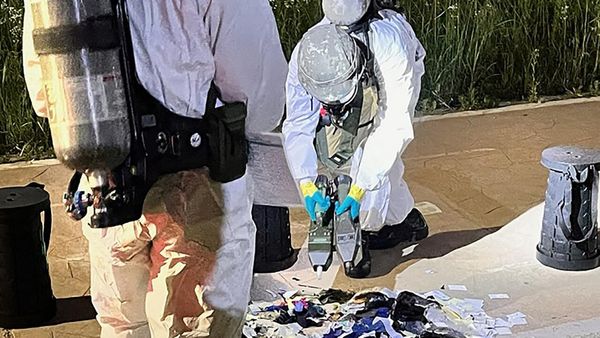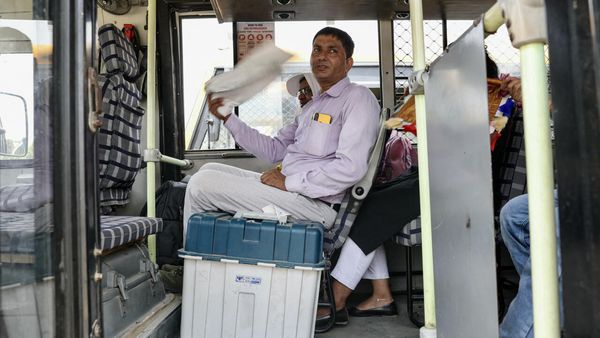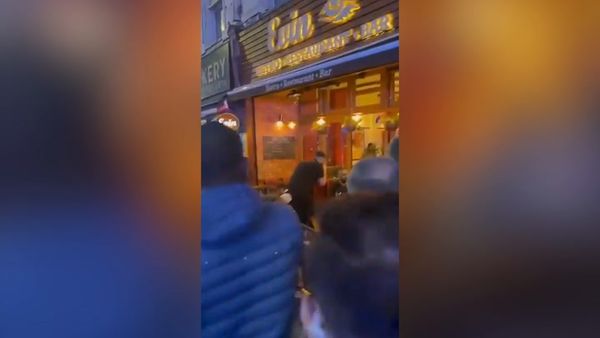
Everything you need to know for a city break in the beautiful capital of Italy’s Tuscany region
Why you should visit Florence
Florence, or Firenze, is “always at the top of the most beautiful places in Italy list”, said Rough Guides. This city in Tuscany “has it all”, from world famous museums and glorious architecture to the Duomo, Piazza della Signoria and Ponte Vecchio. It’s also home to “historic” markets, “magnificent” gardens and some of the world’s top art collections. If you want to see “probably the finest collection in the entire city”, book an immersive private tour of the Uffizi Gallery.
- SEE MORE Hotel Savoy Florence review: reignite your passion for luxury travel
- SEE MORE Relais Santa Croce by Baglioni review: a palazzo fit for a Florentine noble
The birthplace of the Renaissance, Florence is “nothing if not historic”, said Condé Nast Traveler. It attracts around 10 million visitors each year who visit for the city’s “frozen-in-time” palaces, “legendary” attractions, and tourist-friendly Tuscan cuisine and gelato stands. “Ever up for reinvention”, Florence is “modernising” and behind those “classic façades” you’ll find “smart design and influential spaces”. If you’re “still dreaming of your last visit there 20 years ago”, then it’s “time to go back”. There’s plenty more to see.

PxHere
Top attractions and things to do
When in Florence, of course you must visit the Duomo – one of the “most impressive pieces of architecture in the world” – and Michelangelo’s statue of “David” in the Accademia di Belle Arti di Firenze, said Sofia Gymer on TheWeek.co.uk. You should also visit the Piazza Santa Croce, where the stunning Basilica of Santa Croce resides. With a “striking façade” of coloured marble and an interior “brimming with religious artistic masterpieces”, it’s known for housing the tombs of some of the most famous Italians – the real titans of history. Step inside its cool interior to escape the midday sun and visit the resting places of Galileo Galilei, Michelangelo and Macchiavelli, just to name a few. Do make sure you have a scarf or jacket to cover your shoulders though – this is a requirement for most churches in Florence.
Florence Cathedral
The Duomo complex incorporating the Baptistery and Giotto’s Bell Tower dominates Florence’s skyline in all its pastel glory. Elaborately decorated in white, pink and green marble, the Duomo took its time to become the iconic structure it is today. Started in 1296, its striking dome – the world’s largest brick dome – was added in 1436 by celebrated architect Filippo Brunelleschi. The striking Gothic Revival façade for which the cathedral is known was only finished in the 19th century. The cathedral and its buildings occupy a large pedestrian piazza, so that visitors have room in which to walk around and admire its splendour. Inside, the décor is fairly stark, and its main appeal are a mosaic floor and the underground remains of a 7th century cathedral.

PxHere
Giotto’s Bell Tower
The pastel Gothic bell tower next to the cathedral juts nearly 85m into the sky and it’s just 15 square metres at its base. Its pastel marble encrustations match those of the duomo. If your knees are up to it, you can book a ticket to climb its 414 steps. On the way up, pause to catch your breath and admire some of 16 statues situated in various niches along the way – they’re copies of the originals by Italian Renaissance masters such as Donatello and Pisano. The view from the top makes the climb worth it – you’re rewarded with one of the best views of Florence’s red roofs, narrow streets and the Tuscan hills beyond.
Uffizi Gallery
This world-class art museum on the banks of the Arno is an attraction that every visitor must carve out time for. Its collection boasts sculptures and paintings from the Middle Ages to the Modern period, but it’s best known for its Italian Renaissance works. For a close-up glimpse of Sandro Botticelli’s “The Birth of Venus” (1482-85) and Leonardo da Vinci’s “The Annunciation” (c. 1472–75), arrive early to avoid the throngs of art lovers. The 16th century horseshoe-shaped building is itself a work of art, with wide, airy halls perfectly designed to showcase its treasures. The place with the most wow-factor is the Tribuna, an octagonal room of scarlet whose dome is decorated with thousands of shells.

Hotel Savoy/Rocco Forte Hotels
Ponte Vecchio
The world-famous symbol of Florence is its oldest bridge, dating from 1345, which crosses the Arno at its narrowest point of 84m. The bridge was always home to shops, but the stench that arose from the butchers, fishmongers and tanneries that originally traded on the edifice prompted Duke Ferdinand de Medici to evict them in 1593 in favour of jewellers and goldsmiths. The situation remains the same today, so it’s the place to head for if you’re looking for a sparkly souvenir. Plus, its central piazza affords guests great views of the river. The bridge’s “back shops”, visible from the east, were added in the 17th century.
Boboli Gardens
Stroll in one of the finest Italianate gardens in the world in the 111-acre grounds of the Pitti Palace, home of the Medici grand dukes of Tuscany. On a peaceful walk among cypress, evergreen oak trees and box hedges you’ll come across garden sculptures that encompasses Roman antiquities as well as works by 16th and 17th century artists. Its pièce de resistance is the awe-inspiring Buontalenti Grotto, a cave-like structure of three rooms featuring fantastical statues, zodiac signs and sculptures. At the gardens’ highest point, it provides a stunning vista of Florence.

Rocco Forte Hotels
Best hotels in Florence
There are 11 hotels which have been given 9/10 ratings by the experts in The Telegraph. Topping the list is Portrait Firenze, an “exceptional” hotel with a “centralissima” location and a “discreetly luxurious atmosphere”. The hotel’s “sleek and sophisticated” design will “appeal to style hounds”, but the space in the suites and the in-room kitchens make it “an attractive choice for families too”.
Iconic cities “attract travellers with high expectations”, said Travel + Leisure. And the best hotels in Florence “don’t disappoint”. The five best hotels in Florence, according to Travel + Leisure readers, are Portrait Firenze, Hotel Savoy, Helvetia & Bristol Firenze, Hotel Lungarno, and Four Seasons Hotel Firenze.

Baglioni Hotels & Resorts
The Relais Santa Croce by Baglioni is “a palazzo fit for a Florentine noble”, said Sofia Gymer on TheWeek.co.uk. Located in the heart of the ancient Santa Croce district, the hotel’s 24 luxurious rooms and suites are “spacious and thoughtful”, with the “sumptuous” signature suites – Da Verrazzano and De Pepi – each adorned with “magnificent fully frescoed ceilings”.
Hotel Savoy, part of the Rocco Forte Hotels collection, is a “haven” of Italian style that makes the “perfect base to explore the city from”, said Vicki Power on TheWeek.co.uk. Sipping a Campari on the terrace of Hotel Savoy is “a rite of passage for any Italophile”. But don’t make an aperitivo at the Savoy’s Irene Bar “your only acquaintance with this grande dame of Florence hotels”. It’s a “historic” five-star establishment “steeped in history and oozing class”.

Enoteca Pinchiorri/Facebook
Best restaurants and bars in Florence
Eating, drinking and “embracing la dolce vita” in Florence has “honestly never been so tantalising or diverse”, said Nicola Williams on Lonely Planet. Amid the “breathtaking kaleidoscope” of street tripe carts, wine bars, historical cafes and old-school eateries, there are “spectacular” openings and a “new generation of bold women chefs” reinterpreting culinary traditions.
Florence has 11 Michelin-starred restaurants – one three-star, one two-star and nine one-star – and nine restaurants that have been awarded a Bib Gourmand. The cuisine at three-star Enoteca Pinchiorri, located in the Baglioni Relais Santa Croce, is “striking for its opulent and grandiose style”, said the Michelin Guide, which “impresses without becoming overly fussy or excessive”. The two-star Santa Elisabetta is “one of the most interesting gourmet restaurants in Florence”, said the Guide. There are just a few tables here, so guests are “advised to book well in advance”.
Ranked at No.39, Locale Firenze is a new entry on The World’s 50 Best Bars list. Hosted in the “historical” Palazzo Concini, this bar is “like a time machine taking guests on a journey through centuries across its two floors”, each a nod to Florentine culture. And the drinks list is “as distinctive as the venue and its atmosphere”.
Florence’s “rapidly expanding” bar and cocktail scene gives visitors the chance to enjoy happy hours, traditional Italian aperitivo or late-night drinks, said Lauren Caramico on Romeing Firenze. Atrium Bar at the Four Seasons is where “chic meets old-world charm” while Rasputin, a “secret bar located somewhere in Florence”, offers a “speakeasy-style concept, space, and attitude”.

Baglioni Hotels & Resorts
How to get to Florence
Aeroporto di Firenze-Peretola, formally known as the “Amerigo Vespucci” airport, is the main aviation gateway in Florence and located just a few miles from the city centre. This makes it “easy to arrange your own transport if needs be”, said The Getaway Lounge. And in terms of public transport, you can take a bus or a tram. There are direct flights to Florence from London Gatwick, London City and Edinburgh airports in the UK.
Sign up for the Travel newsletter for destination inspiration and the latest news and trends






